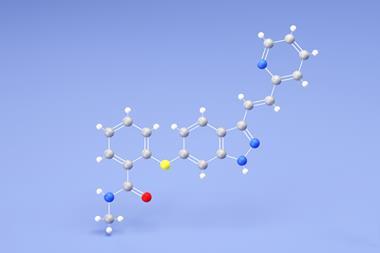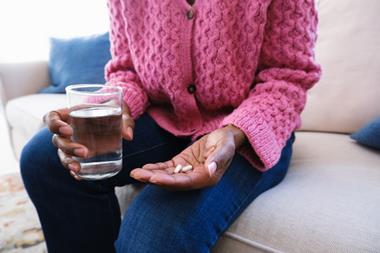How teenagers are disrupting drug discovery
When we first mentioned working with school students to make new medicines in 2012, people thought we were crazy.
I was two years into my postdoc with Mat Todd at the University of Sydney, Australia, working as part of the Open Source Malaria (OSM) consortium. The OSM is an international collaboration trying to find a new medicine for malaria as quickly and cheaply as possible by removing the secrecy usually associated with drug discovery. Experiments are recorded in online electronic lab notebooks accessible to anyone, and meetings, project discussions and planning are all conducted online.
One of the original motivations for this radical transparency was to increase efficiency. It stands to reason that secrecy – while understandable in a competitive and trillion-dollar industry – would slow the progress towards new drug candidates because of duplication of effort. Publishing all data online meant that researchers from institutions and industries anywhere in the world could join OSM and see what others were working on. But there was something about this transparency that I found even more exciting. It wasn’t just researchers who could join the consortium – anyone could.
The Breaking Good Project was born.
Respect the chemistry
In stark contrast to the nefarious exploits of Walter White and Jesse Pinkman in the hit TV series Breaking Bad, we wanted young people and their mentors to be inspired by the power of organic chemistry to improve people’s lives. This was a project where they could make molecules that matter. And while some non-professional scientists joined OSM organically, we chose to cultivate a citizen science project by engaging young people in real drug discovery research.
I fondly remember my university laboratory classes, particularly the many hours spent in the organic laboratory weighing out powders and boiling up liquids. But it was sometimes hard to appreciate the relevance of our efforts beyond those laboratory walls, even for a dedicated chemist. This was especially true when (following careful inspection of our samples for marking purposes) our carefully labelled vials would be jettisoned into the laboratory waste. I watched this cycle repeat as a demonstrator during my PhD. Students would work on the synthesis of a molecule for weeks and then ultimately, at the end of term, the product of their labour would be discarded. It was disheartening to know their efforts weren’t somehow repurposed.
Our idea was to involve students in the core synthetic business of OSM. The students would learn the skills (and, of course, the frustrations) of organic synthesis, then any fruits of their labour would be evaluated alongside the compounds made in the research laboratory. The first group of young scientists to ‘break good’ were an American undergraduate cohort at Lawrence University. Supervised by associate professor Stefan Debbert, the students made six antimalarial compounds, some of which proved to be superb when it came to killing the malaria parasite. The project worked.
Open lessons
In 2015, we started a pilot with young scientists who hadn’t yet left school. In partnership with Sydney Grammar School and two chemistry teachers, Erin Sheridan and Malcolm Binns, students first successfully synthesised antimalarial building blocks and then recreated the medicine Daraprim (pyrimethamine) in their high school laboratories. At the time, the cost of Daraprim, an essential medicine for the treatment of toxoplasmosis, had been increased by pharmaceutical company Turing Pharmaceuticals from $13.50 (£10.35) to $750 a pill overnight, sparking intense public outrage (Chemistry World, November 2015, p37). Over the course of a year, a group of students met at their labs before lessons began and returned once the final bell had rung. Working as a team on their synthesis, the students managed to devise a route that avoided some of the friskier chemicals, learnt how to record experimental data so that others could repeat their efforts and became engaged in discussions about the ethics of access to medicine. Ultimately, they managed to synthesise 4g of pristine Daraprim crystals. We were delighted.
In 2015, we started a pilot with young scientists who hadn’t yet left school. In partnership with Sydney Grammar School and two chemistry teachers, Erin Sheridan and Malcolm Binns, students first successfully synthesised antimalarial building blocks and then recreated the medicine Daraprim (pyrimethamine) in their high school laboratories. At the time, the cost of Daraprim, an essential medicine for the treatment of toxoplasmosis, had been increased by pharmaceutical company Turing Pharmaceuticals from $13.50 (£10.35) to $750 a pill overnight, sparking intense public outrage. Over the course of a year, a group of students met at their labs before lessons began and returned once the final bell had rung. Working as a team on their synthesis, the students managed to devise a route that avoided some of the friskier chemicals, learnt how to record experimental data so that others could repeat their efforts and became engaged in discussions about the ethics of access to medicine. Ultimately, they managed to synthesise 4g of pristine Daraprim crystals. We were delighted.
‘The Daraprim project made it clear that school students, guided by dedicated teachers, can do real research and feed into challenging projects,’ recalls Todd. ‘What was particularly interesting was the way that the wider scientific community, including ex-pharma scientists, could mentor and guide the students because the work was carried out open source. It was so exciting to think what we could achieve next if Breaking Good further developed this idea, and opened up a role in research projects for young students from all backgrounds who just want to do some real science.’
Four years later, and undergraduates from universities in Australia, the US and UK are part of Breaking Good. We know that the next stage – building a scalable and sustainable citizen science project – will be the trickiest part. Breaking Good that requires specialist equipment, supervision and most importantly chemical safety. But we are not alone. Thanks to the support of the Google Impact Challenge, which awarded the project AUS$250,000 (£137,000), the initiative is expanding to schools across Sydney and hopefully beyond.
It turns out that the idea wasn’t quite so crazy after all.

















1 Reader's comment